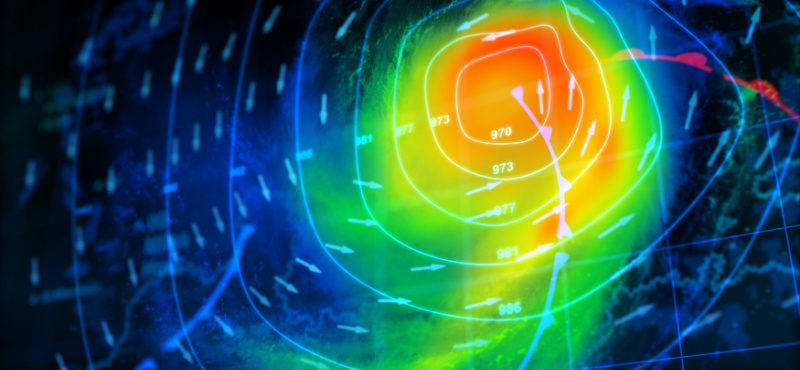The world of aviation is as captivating as it is complex. It’s a realm where man’s desire to conquer the skies meets the unpredictable forces of nature. Among the many challenges that pilots face, understanding and navigating through aviation weather is paramount. In this blog, we’ll dive into the fascinating world of aviation weather, exploring how various conditions like turbulence, icing, and thunderstorms can affect flights and how pilots at Airlink Flight School are trained to interpret weather data and make informed decisions for safe flying.
The Dynamic Nature of Aviation Weather
Aviation weather is a constantly changing puzzle that pilots must solve before every flight. Unlike driving a car where the conditions are relatively stable, flying takes place in an ever-shifting environment. Here are some key weather elements that pilots need to be aware of:
Turbulence: The Bumpy Ride
Turbulence is a term that most passengers are familiar with. It’s that sudden jolt or shake during a flight. But for pilots, turbulence is more than just an inconvenience; it’s a critical weather phenomenon that they must anticipate and manage.
Turbulence can be caused by various factors, including atmospheric instability, wind shear, or proximity to mountains. It can range from light bumps to severe jolts, and it poses a risk to both the comfort of passengers and the structural integrity of the aircraft.
Icing: The Silent Threat
Icing is another weather condition that can have a profound impact on aircraft performance and safety. When an aircraft encounters supercooled water droplets in subfreezing temperatures, ice can accumulate on the aircraft’s surfaces, including wings, tail, and engine inlets.
Icing can degrade the aerodynamic performance of the aircraft, reduce lift, and increase drag. It can also disrupt the aircraft’s sensors and instruments, leading to unreliable data and potential control issues.
To combat icing, pilots receive training on how to recognize and avoid icing conditions. They also have access to weather data and forecasts that include information on the likelihood of encountering icing, enabling them to make informed decisions to prevent or mitigate the effects of ice accumulation.
Thunderstorms: Nature’s Fury
Thunderstorms are one of the most dramatic and potentially hazardous weather phenomena that pilots may encounter. Thunderstorms can bring heavy rain, lightning, strong winds, hail, and even tornadoes. Flying through or near a thunderstorm can pose severe risks to an aircraft.
A good flight school will ensure that its pilots are well-prepared to handle thunderstorms by teaching them how to recognize the signs of thunderstorm development and how to navigate safely around them. Pilots rely on weather radar and up-to-date weather information to plot courses that avoid the most intense areas of thunderstorm activity.
Interpreting Weather Data for Safe Flying
The key to safe flying in any weather condition is the ability to interpret weather data accurately. Airlink Flight School provides its aspiring pilots with comprehensive training on how to access and understand a wide range of weather information sources:
- Weather Briefings: Before each flight, pilots receive weather briefings that provide current weather conditions, forecasts, and any significant weather phenomena along their intended route. These briefings help them make informed decisions about route planning and fuel requirements.
- Weather Radar: Aircraft are equipped with weather radar systems that allow pilots to visualize areas of precipitation and turbulence in real-time. This information helps them make in-flight adjustments to avoid adverse weather.
- METAR and TAF Reports: Pilots are trained to decode and interpret METAR (Meteorological Aerodrome Report) and TAF (Terminal Aerodrome Forecast) reports, which provide concise weather information for specific airports and regions.
- Satellite and Weather Maps: Understanding weather patterns is crucial. Pilots are taught how to analyze satellite images and weather maps to identify areas of high and low pressure, fronts, and other atmospheric features that can impact their flights.
- Communication with ATC: Air Traffic Control (ATC) provides valuable weather information and advisories to pilots during their flights. Effective communication with ATC helps pilots make real-time decisions based on current weather conditions.
Conclusion: Safely Navigating the Skies
In the world of aviation, the safety of passengers and crew always comes first. Understanding aviation weather is a fundamental aspect of ensuring safe and smooth flights. At Airlink Flight School, our pilots are not only trained to operate aircraft but also to respect and navigate the unpredictable forces of nature.
By equipping our pilots with the knowledge and skills to interpret weather data and make informed decisions, we ensure that they can confidently face the challenges posed by turbulence, icing, thunderstorms, and other weather-related factors. Contact us to get started on your registration process to become a private pilot with us!

